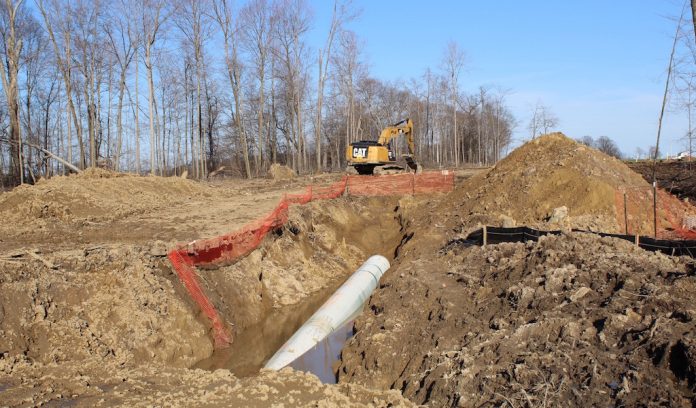SALEM, Ohio — The Ohio Environmental Protection Agency has issued two violations to the company responsible for constructing the Rover Pipeline, after learning of an unauthorized discharge into state wetlands.
Between 1.5 and 2 million gallons of a clay mud material known as bentonite, and cuttings from the natural formation, were released into a state wetland near Navarre, Ohio, April 13, according to James Lee, media relations manager with the Ohio EPA.
An additional 50,000 gallons of the same material were released April 14, in a wetland at Amoy Pavonia Road in Mifflin Township, Richland County.
The Stark County incident covers an area about 500,000 square feet, and is contained within a natural berm and other barriers that the company has constructed in order to keep the material out of the Tuscarawas River.
The Richland County incident affected about 30,000 square feet.
“No public water systems have been impacted,” Lee said.
Out of wetlands
The clay mud is a naturally occurring material, Lee said, but he added that it also does not belong in a state wetland. The material was being used as a lubricant for the drilling process of installing the pipeline.
The company, Energy Transfer, has completed cleanup at the Richland site, and has ceased drilling operations at the Stark County site while cleanup efforts continue. Vacuum trucks and pumping systems are being used to recover the material.
Immediate action
Alexis Daniel, Rover spokesperson, said the company “immediately referred to its procedures plan” to properly dispose of the mud in compliance with regulations.
Lee said the issuance of fines is yet to be determined. According to the citation in Stark County, fines could range from $10,000-$25,000 a day, depending on the type of damages and the duration.
He said Rover has been actively cleaning up the material and the “Ohio EPA continues to monitor the situation.”
When completed, the Rover Pipeline will transport 3.25 billion cubic feet per day of natural gas, through about 710 miles of pipeline, from the Marcellus and Utica shale regions, to northwestern Ohio and into Michigan. The company hopes to have the first phase completed by July and the second part finished by November.











